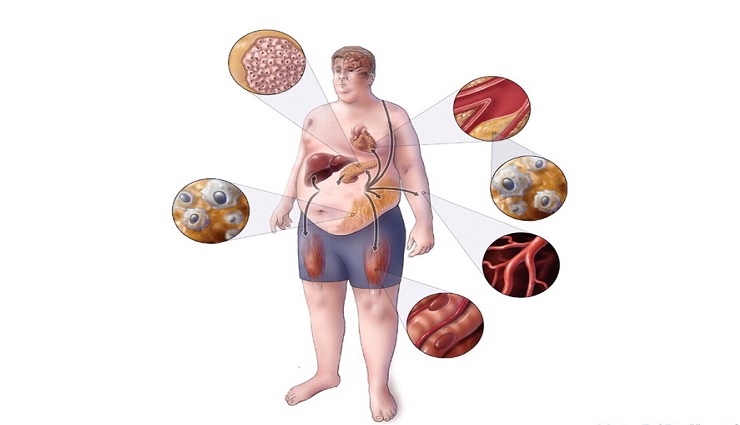The cause and treatment of metabolic disorders
Energy is needed by our bodies for a variety of functions. The metabolism (fuel) of materials provides this energy. Some people may produce too much or too little substance likely to cause disease because of metabolic disorders.
Metabolic disorders: what are they?
In order for the body to function and maintain everyday life, a variety of chemical processes are involved in metabolism. As a result of these chemical processes, organisms grow, reproduce, repair damage, and respond to their environment. There are two methods involved in metabolism:
In catabolism, large molecules are broken down into smaller molecules, such as carbohydrate molecules into glucose, to produce energy.
During anabolism, energy is spent on building new cells, maintaining body tissue, and storing energy.
Metabolites in the body include:
Decomposition of carbohydrates, proteins, and fats in food to release energy;
In urine, excess nitrogen is converted into fecal wastes.
Chemicals are broken down or converted into other substances and transferred to cells.
The body’s metabolic system is disrupted by abnormal chemical reactions, such as the breakdown of large molecules for energy, the dysfunction of cells for energy, or problems with energy regulation.
Insulin, for instance, helps cells absorb glucose and produce energy, stores glucose in muscle and liver tissue, and diabetes interferes with insulin action. Diabetes can cause various problems if insulin does not work correctly.
Children’s metabolic disorders:
A child’s body cannot properly process nutrients such as fat, protein, and sugar when they have metabolic disorders. In young children, metabolic disorders are usually congenital; in older children, obesity leads to type 2 diabetes and heart disease.

Why do metabolic disorders occur?
The metabolism process involves many biochemicals, tissues, and organs. There are many opportunities for metabolic errors and disorders, for example:
There are several ways in which genes can affect metabolism. There are hundreds of genetic metabolic disorders, each with its own symptoms, diagnosis, and treatment. In hereditary metabolic disorders, either an enzyme is not produced or it does not function as it should. Enzymes can accumulate toxic chemicals or remove essential substances, depending on the type.
Metabolism may be impaired due to organ dysfunction. Diabetes is caused when the pancreas does not produce enough insulin to regulate blood sugar.
Dysfunction of mitochondria: Mitochondria are small parts of the cell that produce energy. Mutations in mitochondria, DNA mutations in cells, or environmental stimuli can affect mitochondrial function.
Inherited metabolic disorders include:
There are more than 500 metabolic disorders, some of which are genetic. In contrast, we can mention the following typical cases:
Symptoms of diabetes:
There are three types of diabetes, all of which prevent insulin from properly regulating blood sugar:
In type 1 diabetes, the immune system mistakenly attacks pancreatic cells and restricts insulin production. The condition requires daily insulin injections to control blood sugar levels.
In type 2 diabetes, the body does not produce enough insulin. A variety of factors, such as improper diet, can contribute to this disease at any age.
Type 2 diabetes can be increased by gestational diabetes, which usually develops during pregnancy and resolves after childbirth.
Inflammatory bowel disease:
A genetic mutation limits the production of the enzyme glucose side, which is involved in the breakdown of fat, causing fat to accumulate in the body. As these organs enlarge, this fat gets stuck in the spleen and liver. Type 1 disease is characterized by fatigue and bruising.
Symptoms of hemochromatosis:
Mutations in the HFE gene, excess iron in the diet, or blood transfusions can cause the disease, which affects iron absorption in the body. The following symptoms are associated with this disease:
An ache in the stomach;
Pain in the muscles;
Skin darkening;
Problems with sexuality;
Weakness or fatigue.
4. Disorders of the mitochondria
In these diseases, the mitochondria are unable to produce enough energy for the cell. In most cases, these diseases are caused by genetic mutations inherited from family members.
The mitochondria in all cells need energy, so these disorders can affect any part of the body. Diabetes, for instance, can be caused by them.
Symptoms of mitochondrial disorders include:
Tiredness;
An upset stomach;
Appetite loss;
Weak muscles;
Discoloration of the skin;
Vomiting or nausea;
Weight gain or loss that is unexpected;
Children and infants with developmental problems.
5. A disorder of lysosomal storage
The lysosome is a space inside a cell that breaks down metabolic wastes. It is possible for waste products to accumulate inside a cell when there is an enzyme deficiency.
6. The glycogen storage disease
A problem with sugar storage can cause high blood sugar, muscle aches, and weakness.
Hereditary metabolic disorders are characterized by the following symptoms:
Seizures;
Fatigue;
A stomachache; vomiting;
An upset stomach;
Loss of weight;
Appetite loss;
Disorders of growth;
Weight gain or growth problems;
Food, medication, dehydration, mild illness, or other factors may cause these symptoms. Many diseases manifest within a few weeks of birth, but others may take years to manifest.
Children with metabolic disorders may exhibit the following symptoms:
Vomit;
Anorexia;
Lethargy or fatigue;
Adult metabolic disorders are diagnosed as follows:
It is likely that your doctor will ask about your symptoms and review your medical and family history. You may also be asked by your doctor if your family members have a history of metabolic disorders.
A wide range of problems can be caused by metabolic disorders. To diagnose the disease, your doctor may use a variety of tests. Gaucher’s disease has different symptoms that prolong the diagnosis. In most cases, a blood test is required as part of the diagnosis process. As an example, this test can show abnormal blood sugar, a symptom of diabetes.
Several general principles govern the treatment of these disorders:
Toxins accumulated in the body must be eliminated;
Foods or drugs that cannot be metabolized should be reduced or eliminated.
To restore fuel to normal, replace enzymes or chemicals that have been removed or inactivated.
As an example, type 1 diabetes requires daily insulin injections, while type 2 diabetes requires medication and lifestyle changes.
What is the best time to see a doctor?
Metabolic disorders can become serious if left untreated. Consult your doctor if you experience any of the following symptoms:
Vomiting regularly;
Skin yellowing;
Weakness and fatigue;
Loss or gain of unwanted weight;
Despite eating or drinking, feeling hungry or thirsty.


